Back in the summer of 1998 the Sega Saturn was officially discontinued in Europe. Looking back at that time now I see the Saturn‘s launch in this territory as more of an “easter egg” gesture than a legitimate console release. Sega’s own ineptitude and arrogance with the Saturn had stung consumers badly and now with very little money and a fan base to win back from its rival Sony, the Dreamcast would be Sega’s last chance at attaining the greatness it had once held with the Mega Drive.
September 9th 1999 (9/9/99) is the day that perhaps most people will associate with Sega’s final home video game console. A hugely successful marketing blitz targeting this rather memorable date led Sega to a lucrative North American launch day that smashed sales records and made Dreamcast the fastest selling games console of that time. And fittingly, this past September, the Internet was once again alive with Dreamcast fever as the console celebrated its fifteenth anniversary.
But October 14, 1999 (14/10/99… not quite as memorable is it?) is the date that tends to stick with me personally as this was the day that the console finally saw release in Europe. I would end up living practically every moment and every day of the Dreamcast‘s short tenure on the market.
In the name of posterity then, I’d like to ramble off some of those memories and have a quick look at the console, the games, and the legacy that Sega’s final console left behind and my thoughts on it after fifteen crazy years.
Dreamcast. Is it possible?
The Dreamcast tends to be very fondly remembered then, but why is this exactly? For some it will be all about the games, for others it might be the homebrew scene, early experiences of going online or even the little things like the unique memory card.
For me personally, the answer is simple: this is a dedicated games console that was willing to innovate. Sega have been responsible for more ‘firsts’ in the arena of video gaming than most companies could even hope for but just look at few of these facts that the Dreamcast can claim as its own:
- The first 128-bit, sixth generation console
- The first console to render full frames of animation through the use of VGA integration
- The first console to come prepackaged with a modem for online gaming and internet browsing
- Home of the first online console game (Chu Chu Rocket)
- Home of the first online console game to ever incorporate voice chat (Alien Front Online)
- The highest rated launch title ever (Soul Calibur)
But this is more than just statistics, back then you could just tell that the Dreamcast was created by a company that was genuinely sorry for its past mistakes. Long before the rampant consumer cynicism present in today’s market, before DLC, before subscription plans and before TV; it was just companies like Sega doing everything in their power to deliver an unadulterated gaming experience like no other with the very best graphics and gameplay all working towards that single goal. Sega were out to redeem themselves with the Dreamcast and I have always respected that.
The console undoubtedly saw its greatest success in the United States. The Dreamcast may not remembered that well today but back in 1999, you will have damn sure remembered 9/9/99! Aside from an effective advertising campaign though, the Dreamcast boasted powerful 128-bit graphics, a competitive price point, a strong lineup of games and in stark contrast to the Saturn; a friendly development environment to encourage greater third party support.
My first encounter with the actual hardware came from viewing a rolling demo of House of the Dead 2. I couldn’t believe the quality of the graphics and the sheer over-the-top arcade action that was on display; it left a big impression on me. The Dreamcast‘s propriety 1GB-large GD-ROM discs allowed for incredible graphics, video and sound compared to the standard CD-ROM which was a fixture in the 32-bit era of systems. I nearly had a heart attack when I was next introduced to Soul Calibur; the best looking, best playing game of its time.
Without a doubt, it seemed this time Sega were really stepping up a gear and I found it impossible not to get swept up in the spectacle of this big comeback.
I think the most attractive selling point for me originally though was the prospect of playing the real next-generation Sonic the Hedgehog game i.e. Sonic Adventure. Sega had screwed up big time by failing to bring an original Sonic title to the Saturn but they were clearly determined not to make that same mistake again.
Sonic Adventure was released to heavy praise and rightly so; this is a game that fully realized Sonic in 3D and reinvented many aspects of the series that delighted fans rather then angering them (something that Sonic Boom is doing quite well today it seems). The effect of hindsight and dissenting opinions passed on from inferior ports have been cruel to Sonic Adventure‘s memory (reviews were extremely positive at the time of release), but it still stands as one of the first games that fully harnessed the Dreamcast‘s power and established an entirely new universe for its respective franchise.
In terms of other selling points, Sega had correctly predicted that online gaming was on the verge of becoming the next big thing for the industry. To accompany the console’s built in modem, Sega created Dreamarena (the US counterpart being SegaNet); an online service for Dreamcast owners that offered all the latest gaming news and exclusive downloads. Navigating with a control pad was doable but cumbersome and so Sega released official keyboard and mouse accessories to make the experience more PC-like in terms of usability.
Sega also followed Nintendo’s good example by incorporating four native controller ports into the Dreamcast hardware. You could practically feel the gaming public yell a collective “at last!” upon hearing the news. Exactly as the Nintendo 64 was doing at the time; the Dreamcast was seeking to expand the gaming experience to be more inclusive with true multiplayer gaming becoming one of the next important features that developers needed to seriously consider. I remember being particularly appalled when the Sony PlayStation 2 was announced as still only supporting 2 players out-of-the-box, choosing to revert back to the typically cumbersome and expensive multitap accessories to achieve what similar systems were doing from the off.
And Sega would continue to find ways in which it could innovate. Take the Visual Memory Unit (VMU) for one; more than just a mere memory card, this device possesses many novel features including an LCD screen, multiplayer/file sharing connector, second screen functionality, clock, file manager, built-in flash memory, and it makes sounds too!
“They’ve thought of everything!”
But perhaps the most interesting of those features is the second screen functionality that was designed to accompany full games by providing additional information on the LCD screen that displays in the middle of the console joypad. Certain games feature everything from health statuses to animations that change with what’s happening on the screen and in the case of Sonic Shuffle it even provides a basis for that game’s core movement mechanic.
Getting back to the topic of games; Dreamcast was blessed with many exclusive titles that would help cement the console in people’s hearts. To me, the year 2000 will always be the year of the Dreamcast as the wealth of quality releases and developments that came at this time were great and easily constituted the best year that the console would have on the market.
As it stands today I have played at least 95% of the PAL library of Dreamcast games and several of the NTSC exclusives also. I don’t think there are many tastes that aren’t well catered for as long as you take into account the dramatically short lifespan of the platform. There’s a decent selection of quality beat ’em ups, racers, action and sports titles that should keep many players occupied for a good while. With the console sharing the same components as Sega’s (then) flagship arcade board NAOMI, Dreamcast owners would be treated to a plethora of near-perfect arcade ports of several much loved games including Crazy Taxi, Virtua Fighter 3, Marvel versus Capcom and many, many others.
And when it comes to online enabled games I’m sure the Dreamcast is responsible for quite a few gamer stories. Whether it was the free copy of the superb puzzler Chu Chu Rocket that came through the post that day, a frantic blast on Quake III: Arena for the first time or perhaps even the rampant (and often fun!) cheating on Sega’s excellent Phantasy Star Online; it all added up to a very new experience that’s routinely taken for granted nowadays.
Shenmue is also one of those true standout releases for the Dreamcast. An incredibly deep and rewarding tale of one young man’s quest for revenge; Shenmue features incredible graphics for its time and combines them with realism, flavour and a supremely tantalizing adventure that will quickly suck you in if you let it.
By the time a sequel rolled around in late 2001, the Dreamcast was sadly on its way out and for that reason it’s likely that Shenmue II will represent one of the last great experiences that many gamers would have on the console. Released exclusively in Japan and the PAL territories, it’s criminal to think that many gamers across the pond will have missed out on this absolute gem of a game. I received Shenmue II as a gift that Christmas and became utterly absorbed well into the new year by the even more pristine graphics, varied gameplay and grander scale.
Considering the rather shambolic spree that the Sega Saturn embarked on from its first day, I’m sure that most will agree that the Dreamcast at least went out with one hell of a bang!
Good times indeed.
It’s perfectly possible, It’s just bloody difficult.
Nostalgia often threatens to mask certain truths about gaming “back in the day” and it’s no different with the Dreamcast. It can feel somewhat difficult to criticize this console considering its almost irresistible reputation as the plucky underdog to the Sony juggernaut, but to give a fair appraisal of how I see the console today; criticize I must.
The biggest strike I see against Sega’s final console is its crippling unreliability. Before the Xbox 360 could come along and steal the limelight with its “red ring of death”, the Dreamcast was easily one of the most fault-prone systems released to market. Problems including temperamental controller ports, a weak laser that refuses to load games and widespread resetting failures all detract from the otherwise impressive hardware.
The console is remarkably loud during operation too with its grinding GD-ROM drive being particularly unpleasant to listen to at times. It’s a commonly known fact that the batteries for the vital VMU accessories don’t last at all which leads to many an ear-wrenching, high pitched beep whenever one is being recognized in the controller. It’s strange to think how this rather small and tidy console can generate so much ******* noise!
Other problems with the hardware start to manifest when you start looking at the controller. Long derided as an inferior successor to the excellent Sega Saturn joypad, is the Dreamcast controller really all that bad? In my teenage years I would argue this point often; vehemently stating that the advantages offered by the controller’s existing design offset the disadvantages and enrich the gameplay experience.
This is proof that you shouldn’t seriously listen to anyone under the age of twenty five as they clearly have no idea what they’re talking about.
The Dreamcast pad is a very poor design in the grand scheme of things and any minor advantages offered by its layout are offset by major problems that will soon manifest whilst using it.
The second screen functionality is a great idea, there are no doubts about that. After all, Nintendo’s Wii U console is presently rocking this line as a major selling point. But the Dreamcast’s pad has given up a lot of real estate to accommodate the VMU screen and this has led to a couple of problems.
The first of these is the fact that the controller wire protrudes from the bottom of the pad instead of the more traditional approach of having it come from the top. You’ll often see newbies tangling themselves up in the wire as it rests below you and the whole thing becomes a pain too many times to simply ignore. Sega clearly realized this and added a small groove at the pad’s back to hold the wire in place during gameplay but it’s still not a very secure solution and still ends up feeling “wrong”.
There’s also the simple criticism that the joypad is uncomfortable to use. Over the years I’ve also found this to be quite true as unlike most pads which are held in a horizontal fashion (with hands quite far apart) the Dreamcast controller forces your hands closer together making your hands ‘clutch’ instead of ‘hold.’ It doesn’t read like it would make much difference but playing a racing game for example (where your index finger has to grip the shoulder button to accelerate), it will soon start to feel painful. The controller is also particularly heavy when loaded with a VMU and vibration pack but this is something that you can at least get used to I suppose.
The lack of space that I previously mentioned also comes with another deficiency; a severe lack of buttons. Simply put; the Dreamcast control pad is in dire need of additional buttons. The analogue and D-pad combo is nice but with only six other buttons (not including the start button), many games struggle to offer adequate control without resorting to awkward entry commands and combinations. In comparison, the similar 3D controller for Sega Saturn comes loaded with eight buttons (again, not including start) and it was released years before when the Dreamcast console was still only a codename (or two)!
As it stands, the number of buttons on the Dreamcast pad are perfectly suited to the simple pick-up-and-play nature of arcade titles such as Virtua Tennis, but at the time gamers were getting hungry for more sophisticated experiences that required more buttons in order to offer that need. It’s unlucky maybe but the Dreamcast was released in a time where first person shooters were really starting to take off. Popular games such as Half Life and Unreal Tournament may have looked great on the console but there was never any hope of them controlling as well with such a shortage of buttons. Whilst a keyboard and mouse setup would alleviate this problem somewhat, it’s still an additional expense and not suitable for everyone. If the Dreamcast had lasted any longer on the market then Sega would definitely have needed to consider a dual analogue alternative at some point.
I can’t help but feel that the VMU possesses a lot of unrealized potential too. I know that PAL releases rarely took advantage of it, with only a scant few providing decent downloadable mini games or any worthwhile integration. As previously stated, the units drank batteries faster than a Game Gear which kind of put a dampener on the whole extended social experience that Sega was hoping to foster with their design. Their memory space is also remarkably small, with certain games (sports titles in particular) requiring the space of an entire unit to save game progress! “Um… how about, no!”
Every game console library has its fair share of crappy games and the Dreamcast is no exception to that rule. There were an abundance of quick ports released for the console that completely failed to leverage the power of the hardware and its features; a common criticism of ports perhaps but one that is felt pretty hard here.
Another problem on the games front stemmed from the console’s heavily advertised feature of online gaming which suffered heavy delays in all territories it was promised in. In order to make release, many developers had to simply drop their online components altogether. This was an especially prevalent problem in Europe where each month I would come across another disappointing magazine review that announced how yet another game would be losing its online functionality. Games such as Unreal Tournament, Outtrigger and Floigan Bros. all shipped without online gaming or online features despite the NTSC equivalents having it all in full.
There are many online games (especially sports titles) that would only be released in America; further giving the impression that the online rollout in Europe was a less than stellar effort on Sega’s part.
The unremarkable shoot ’em up Slave Zero has a four player mode that displays an interesting network error message at the top of the screen when starting up. Aside from being a bit sloppy presentation-wise, it makes you wonder if this is a sign that its online features were scrapped completely during development and it makes me wonder how many other games in the Dreamcast library suffered the same fate due to the delays in online service.
Overall, it’s exactly this kind of thing that makes the marketing tagline “Up to six billion players” somewhat misleading.
The Dream Collapses
Despite the early success that it enjoyed, the Dreamcast was undoubtedly a failure in terms of providing Sega with a lasting foothold in the console market. There are many reasons for why this came to be, here are a few of them:
Sega didn’t have the money to compete
Personally I see this as the number 1 reason for the Dreamcast‘s swift demise. Sega could not outspend its biggest rival Sony with the limited resources it had available. Video game consoles are an astronomically expensive endeavor where a company is typically expected to endure consistent losses before making a profit. Quite simply, Sega couldn’t afford to do this anymore.
Sega had spent its way into a hole with its 32-bit failures and now it was paying the price. Also, prior to the console’s release, Sega was hit with a lawsuit by graphics card manufacturer 3dfx which put another serious drain on funds; something that Sega could ill-afford at such a crucial time.
Many factors working against the Dreamcast too often stem from the very simple fact that Sega just didn’t have the money to make it succeed like perhaps it should have.
Loss of consumer faith
If you haven’t been able to tell by my inferences so far, let me spell it out for you: Sega handled the Sega Saturn console very poorly. Gamers had been stung by Sega’s slew of lackluster consoles in the past and they now looked to PlayStation as their system of choice; there’s no real argument here as the numbers speak for themselves.
Sega had to win back a lot of trust with the Dreamcast and that was always going to be an uphill battle for them.
Electronic Arts refused to support the console
Customers weren’t the only ones feeling bitter towards Sega. Angered over the Saturn debacle and the refusal to grant a monopoly on sports games for the Dreamcast; publishing giant Electronic Arts outright stated that they wouldn’t bring any of their games to Sega’s new console. To their credit, EA stuck to their guns even when their stock price was dipping during the Dreamcast‘s profitable season.
Not a single piece of EA software would ever appear on the Dreamcast and considering EA is the owner of major sports IPs such as FIFA Football, that loss was no doubt felt in a big way.
PlayStation 2 hype
It’s often stated that the Dreamcast was a warmup act for Sony’s PlayStation 2 and sadly it’s true. I remember for a fact that Dreamcast was extremely unpopular when I was in school with almost everyone I knew instead saving their money for what was seen as a much better and cooler alternative.
Sony had marketing savvy and more than enough money to abuse it, it’s just unfortunate that the Dreamcast was buried underneath all that hype as the console barely competed a year with the PlayStation 2 before being discontinued.
Piracy
At first the Dreamcast was almost immune to piracy due to its propriety GD-ROM format of discs but once a loophole was discovered in the console’s BIOS to allow for self-booting CDRs to run full games that was pretty much the end of that.
Dreamcast was ravaged by piracy from then on with its new games populating file sharing websites all across the Internet mere days after release. Sega tried to salvage the situation by revising the BIOS in later editions of the console but by then the damage had already been done.
The Dreamcast experienced lousy software sales for the duration of its short run and this is one of the main reasons as for why.
Distribution woes
Slow production of a certain microchip used in the console led to a severe shortage of units for the Japanese launch; revenue that Sega really could have used. Other countries were also hit by supply problems with some stores in Australia not even receiving any memory cards in time for launch day. Oops!
Lack of support for DVDs
The PlayStation 2 sold many units (especially in Japan) because of it essentially being a cheap DVD player; a success that the PlayStation 3 would later replicate with Blu-rays. In 1998, DVD technology was gaining momentum fast but unfortunately for Sega the technology was still very expensive. The company couldn’t afford to go with DVD support for the Dreamcast so there was no way taking advantage of the burgeoning market. A DVD add-on for Dreamcast was protyped but cancelled due to the rapidily approaching death of the system.
Consoles were not fully ready for online gaming
Broadband internet had not yet been widely adopted and so Sega’s proposal of a connected gaming console struggled with the basic dial-up Internet access that was available at the time.
European Dreamcast consoles come installed with a 33.6K modem compared to the NTSC 56K systems too, which as you can imagine, didn’t always result in the kind of cutting-edge online gameplay that Sega had envisioned.
Dream On
Despite it becoming the fastest selling console at the time; this record is diminished on a yearly basis thanks to new console releases and the comparatively insane popularity of gaming today. Although the console was ultimately a commercial failure though, I often think that Sega had another motive for pursuing the Dreamcast in the way they did. If you look at the circumstances from the time; Sega’s lack of funds and overall image, there is no way to expect that the Dreamcast would succeed in the way it needed to.
Sega endured the console business anyway and they did this for one main reason: to redeem the company’s reputation. That’s what the romantic in me wants to believe anyway…
The book Service Games: The Rise and Fall of Sega by Sam Pettus and David Munoz support this viewpoint however, claiming that at one point, the iconic Sega CEO Isao Okawa was so committed to this stance that he donated large sums of his own money to Sega and looked aside debts that were owed to him in order to preserve the company.
With so many strikes against it going into the sixth generation, it definitely feels that the Dreamcast was always destined to be Sega’s final console. It was conceived in a desperate act to rescue Sega’s reputation as a brand name and it’s in this way at least that I see it as a success. The Dreamcast brought us many firsts, established many now beloved franchises and lives on in people’s memories in a generally more positive light than some of Sega’s preceding efforts.
Today the homebrew scene is extremely strong on Dreamcast and there are still several small companies out there who continue to release games for the machine on a yearly basis. These limited print runs often sell out extremely quickly and it all feeds the image that perhaps Dreamcast is one of the last of the collectable consoles currently doing the rounds on the secondhand market.
Getting in to Dreamcast in 2014 is still a realistic propasition for new collectors or anyone interested in the gaming of yesteryear. A large majority of the Dreamcast library has since been cherrypicked and remastered for more modern consoles with titles such as Rez HD and Under Defeat HD actually outstripping their Dreamcast originals.
But there are still a good few titles that still look and play their best on Dreamcast (Grandia II, Shenmue) so it will always be a console worth revisiting for enthusiasts. The major obstacle to Dreamcast gaming thesedays tends to be the task of finding a console in good working condition as the unreliable nature of the hardware can make things difficult in that regard. Fortunately there is a decent library of games and it’s possible to pick up some of the more common (but perfectly playable) titles pretty cheap on eBay.
For use on modern LCD televisions the Dreamcast is thankfully ahead of its time in that department as it offers VGA support that delivers an incredibly crisp image considering the age of the hardware. The only barrier to this however is the scarcity and extremely high resell value of VGA boxes on the used market which can esculate the cost involved considerably. Luckily for me, I have a VGA unit and region-free BIOS built into my own personal custom-built console that works brilliantly as a quality, reliable and cost-effective solution for enjoying Dreamcast with today’s technology.
The former Sega PR head Tadashi Takezaki declared the Dreamcast to be a “revolutionary system” in a retrospective a couple of years ago. He said: “The seeds we sowed with the Dreamcast are finally bearing fruit at this point in time. In some ways we were going by the seat of our pants, but it was part of the Sega credo at the time — if it’s fun, then go for it.”
What a great statement.
The Dreamcast may not have been the financial saviour that it needed to be but perhaps it doesn’t matter any more. The console delivered on its promise of next-level gaming and fostered many cherished experiences that if nothing else, Sega can be proud of.
If it’s fun, then go for it.
Words that the Dream lived and died by.
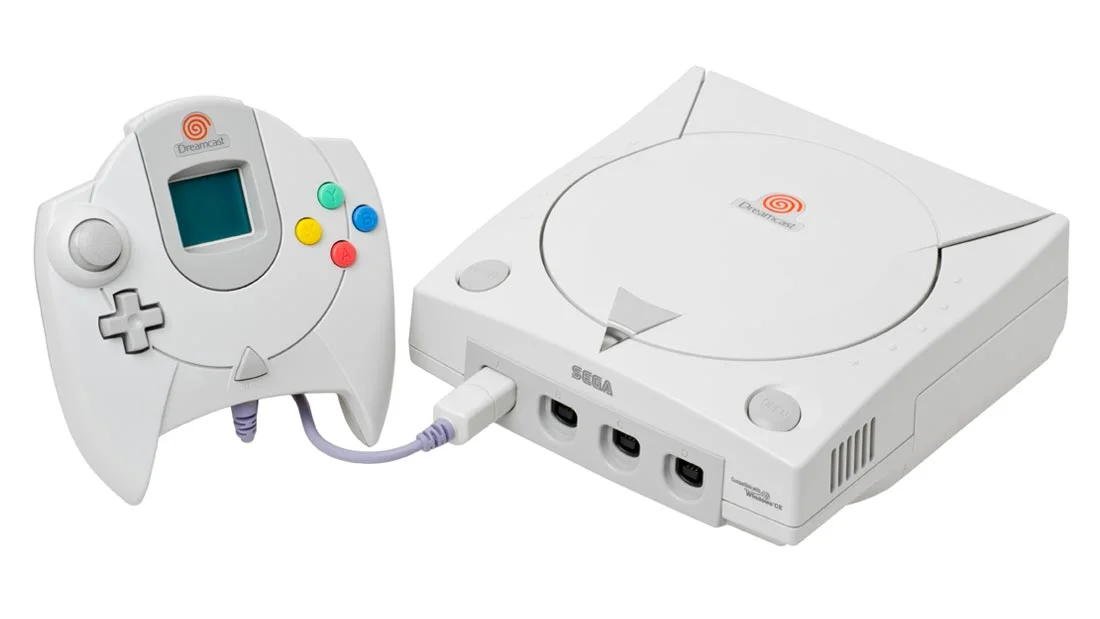
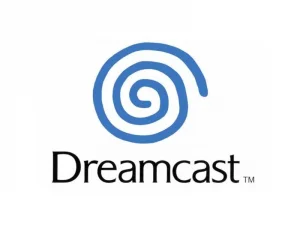
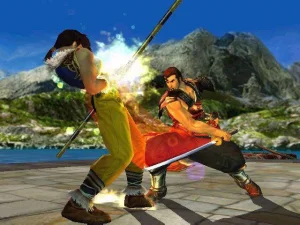
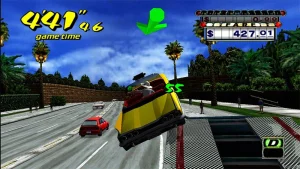
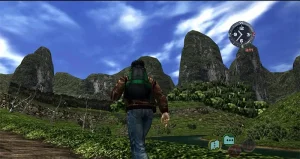
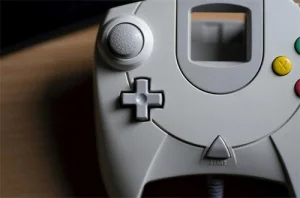
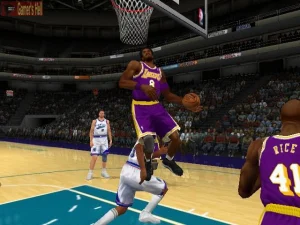
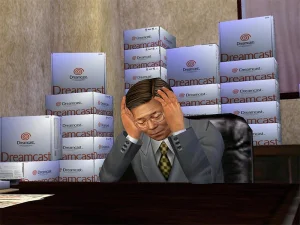


I was lucky enough to get mine on the release morning – not something I’ve ever done since, either, my anticipation for the Dreamcast being so high at the time. We salute you, Segata Sanshiro!
http://www.badassoftheweek.com/badass-segata.jpg
Release morning! Major respect, man.
Yeah, it is a shame that Sanshiro was phased out after the Saturn tanked- seeing as he helped prop up that console on the advertising front it would have been nice to bring him back to help inject some life into the Dreamcast sales in Japan.
…Segata Sanshiro..!
Hi Alex,
It’s not that common to come across an article so beautifully written. Kudos on a job well done.
I appreciate that, thank you.